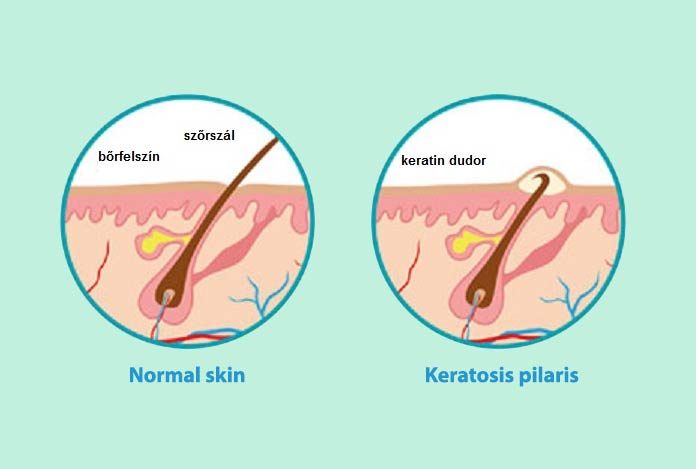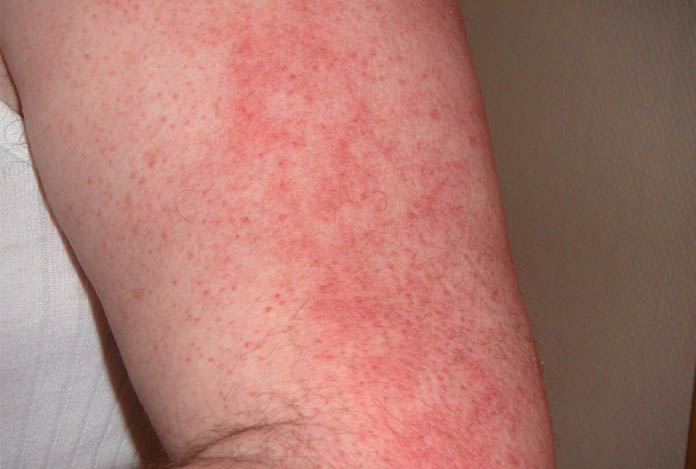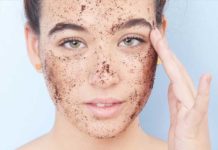
Keratosis pilaris is a harmless condition of the skin in which small and hard bumps appear on the skin, making the skin feel like sandpaper. These red bumps usually do not go away like goose bumps. These occur when keratin builds up in the skin. Keratin protects the skin from infectious and harmful substances, but excessive keratin blocks the hair follicles to open.
It is not yet known as to why keratin builds up this way. The condition is generally attributed to genetic conditions or various skin diseases like atopic dermatitis. It is hereditary and runs in families. Dr. Harold Lancer warns that dry skin can aggravate the condition of keratosis pilaris.
Keratosis pilaris is a skin condition and is not considered as dangerous or harmful. People with this condition do not like the look and feel of their skin and find it disturbing. It is also referred to as chicken skin. The bumps are small and may appear pink, red or blackish brown. Dr. Harold Lancer says that the bumps could get inflamed and start looking like a rash, which may lead to the development of dry and rough patches on the skin.
The likelihood of having keratosis pilaris is higher in case you are suffering from asthma or eczema, or if you are overweight. Some other skin conditions and medicines can cause the development of this condition. It shows up on upper arms, cheeks, thighs and buttocks. In fact, keratosis can be found on any part of the body except the palms and sole.
Dr. Lancer says that Keratosis pilaris is common among children and hits 50-80% of adolescents. With age, it settles, but around 40% adults continue to face this condition. Interestingly, it does not require treatment. It gets resolved on its own. Symptoms may become better or worse. For example dry skin in winters can exacerbate the condition. Also, regular swimming can worsen the condition.
What to Do in Case of Keratosis Pilaris

Dr. Lancer advices that before going for treatment, you can try some home remedies and see whether the condition improves or not. It is possible that you may not be able to get rid of it completely, but improvements may be observed upon adopting the right steps.
Some of the measures include not washing your face or taking showers with extremely hot water. Bathing for long with hot water saps the moisture out of your skin, making the skin dry and irritated. Use lukewarm water and do not bathe for more than 10 minutes. If you live in regions that are dry or you have your AC on for a major part of the day, using a humidifier would be of great help as it will maintain the moisture of the skin. Dr. Harold Lancer stresses that you must not use soaps and cleansers that are harsh on your skin. Instead, go for gentler options to avoid adverse reactions.
Dr. Lancer says that exfoliation can be used for the treatment but harsh exfoliants and vigorous scrubbing can cause damage to the skin. Try a gentle polish that will not scratch your skin. Use something, which contains salicylic acid for the removal of dead skin cells and protecting the pores from keratin buildup.
Use natural exfoliators for cleaning the skin. Make sure that the cleanser keeps the pores clear and does not over dry the skin. Apply a moisturizer after cleaning your skin. Do it while the skin is still damp, so that it can retain the moisture. Depending on the intensity of keratosis pilaris as well as the effectiveness of the moisturizer and ingredients in your skincare products, you may have to moisturize many times a day. Also ensure that you wear loose clothing that does not exacerbate your keratosis pilaris.
Dr. Lancer further adds that irrespective of whether the keratosis is on your body or face, the dermatologist will recommend starting the treatment by moisturizing and exfoliating before you use any medicated cream. You can start with a product containing uniform quartz crystals for gentle polishing without causing abrasion to the skin.
Also, give a try to products containing salicylic acid, which softens the excess keratin that creates bumps by clogging the pores. You can follow it up with products containing glycolic acid and salicylic acid. These ingredients clear follicles of buildup, leading to smooth skin. These acids reduce the production of sebum.
If regular moisturizing does not help, dermatologist may suggest medicated creams containing higher concentrations of alpha hydroxy acids, salicylic acid and lactic acid. Ask your dermatologist to prescribe you the ideal strength for the medicated creams.
Advanced Treatments for Keratosis Pilaris
Advanced treatments like retexturizing the skin with glycolic acid can help exfoliate the skin, giving skin a smooth and supple appearance. Nevertheless, a dermatologist should always be consulted before opting for advanced treatment methods.
If nothing seems to work, your dermatologist will prescribe ammonium lactate cream or corticosteroids. In extreme cases, laser treatment can be used to treat keratosis pilaris. Shaving or waxing hair can aggravate the condition, so dermatologist usually suggest laser hair removal. Always remember, only a dermatologist can tell you about the best possible solution.
Dr. Lancer says that the treatment may improve your condition, but keratosis is likely to return once you stop the treatment. It often continues for years. With persistent treatment, you can remove the bumps, so that your skin looks soft and supple.
know the solutions given by Dr. Lancer.










